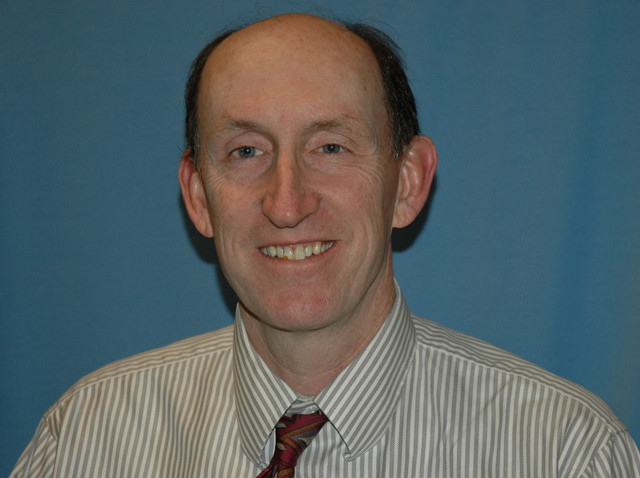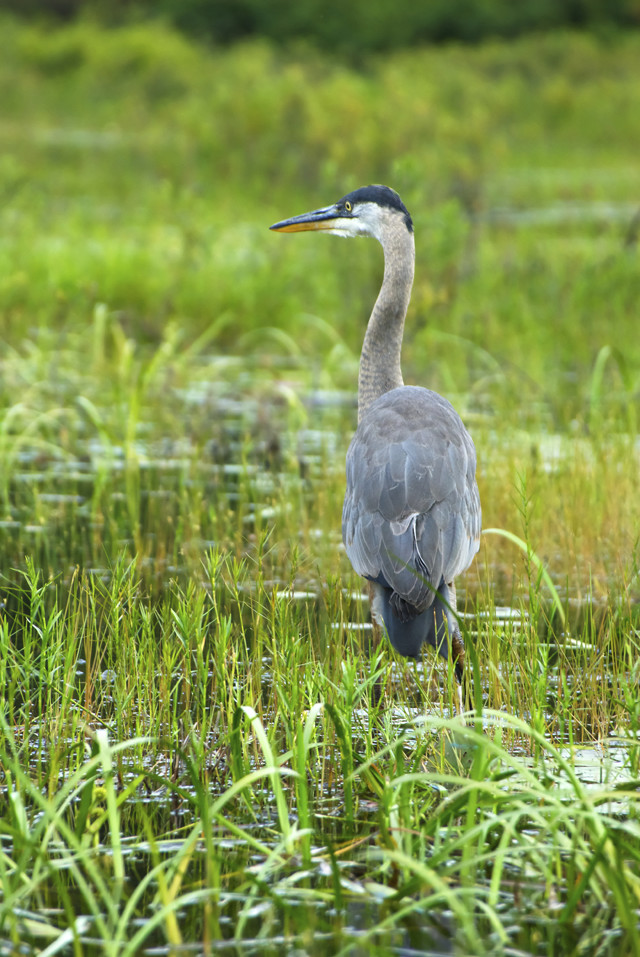
by Brian Fisher Johnson Wednesday, May 23, 2018

Mike Gallagher. Credit: Germaine Price
Mike Gallagher is not your typical science educator. After spending three years as a researcher and field geologist with the U.S. Geological Survey in Menlo Park, Calif., Gallagher decided to become a teacher after budget cuts at USGS in the late 1980s encouraged him to reconsider his career track. Gallagher went on to earn a Washington state teaching certificate (while renting a place in the belfry of a local church). As a teacher in Washington, Gallagher engaged his students with hands-on science research projects: By 1999, two of his students had even presented their research on the water quality of a local stream to then-Governor Gary Locke, who is now secretary of commerce. A windsurfer in his spare time, Gallagher now works for Michigan’s Oakland Intermediate School District, advising districts and teachers on how to improve their science education programs.
EARTH reporter Brian Fisher Johnson recently caught up with Gallagher.
BFJ: Going from a government scientist to a high school teacher — that’s quite a switch. What was the biggest adjustment?
MG: The biggest adjustment for me was developing a more realistic understanding of where the students are in terms of their ability to comprehend concepts and how to construct experiences that are effective for them.
BFJ: Did you ever have a day when a student raised his hand and basically said, “I don’t know what you’re talking about”?
MG: Yeah. Here is an example. Across the street from our school was a beautiful wetland that was part of Western Washington University. I wanted my students to go out and [mark the boundaries of] the wetland based on soil characteristics and plant populations. So I took a day or two to teach them about topographic maps, and my students were fairly successful at answering the types of questions I posed for them in the classroom. When I took them out into the field, I quickly discovered that few of them could locate themselves on the map. I realized it was a completely different skill to go stand out in a field and use a topographic map than to sit in a classroom answering questions. I realized that I had to spend a lot more time with topographic maps. But that was critical, because map interpretation is one of the fluencies that is fundamental to the geosciences. We become so fluent with it that we are unaware that the novice does not see what we see.

Credit: ©iStockphoto.com/mmac72
BFJ: Recent data suggest high schools are putting more emphasis on physics, chemistry and biology than on geology. How did you manage to teach earth science?
MG: There are two chapters to that story. First, in the school I taught in, most new teachers used the ninth grade course as a stepping stone to get into a position for teaching upper-level courses, where students tend to be more compliant. If I was happy teaching ninth grade, they were happy letting me teach it the way I wanted.
The second chapter relates to the fact that in the mid-1990s, we were getting really excited about educational technology, and many were eager to discover powerful ways to use it with students. For me, it was about integrating computers as tools for student research and investigations. I promoted the use of searchable online datasets, image processing, GIS software and even meaningful use of spreadsheet software. I was recognized for developing innovative uses of technology, beyond the appeal of colorful charts and maps. While it was obvious that computers could be used to gather and present information, earth science naturally lends itself to uses that center on student thinking: analysis and problem solving.
So, with those kinds of tools available, in addition to an interest in getting my students outdoors, I proposed to create an upper-level geophysics course that would also grant students college credit. I wrote a grant to get field equipment like rock hammers, Brunton compasses, maps and software, and the district allowed me to pioneer the course.
BFJ: That sounds so much more interesting than the conversations my classmates and I had in middle school about surface tension.
MG: [Laughs] You would think so, but I had to work to reveal the relevancy of the projects that I was initiating. Just because I was interested in doing these projects didn’t mean the students were interested. I discovered what I needed to do was connect my projects explicitly to the world by giving my students an audience with people outside the classroom. I’ll give you an example that really turned kids’ heads. We were doing water quality monitoring. I had a friend who worked for an environmental organization, and early in the project I asked her to lead a class discussion. In addition to charisma, she had slides from their neighborhoods, their watersheds, their lawns, and she made them feel like what they were doing was important. This completely turned their attitudes around.
Here’s something else you’re speaking to. In my work with some high-performing schools, I see a de-emphasis on earth science. Here’s why: Parents and students don’t see the connection between high achievement in earth science and future opportunities, such as college admission or viable, lucrative careers. There are tremendous opportunities and we need to make those more visible. Also, geoscience courses need to be prominent in the upper-level offerings, sharing the space taken up by the honors and Advanced Placement (AP) courses of other fields. Geoscience careers need to be as familiar to parents and students as engineering or business.

According to data compiled by the American Geological Institute (which publishes EARTH), since 1990, the percentage of certified high school earth science teachers has been consistently lower than the other science disciplines. Credit: Left: ©Marli Miller, University of Oregon/ESW Image Bank; right: ©iStockphoto.com/Andrew Wood
BFJ: It sounds like geoscientists need to do a better job of putting themselves out there — going to career days and talking to students.
MG: That’s probably what’s needed. But we also need to consider expanding the AP options in the earth sciences.
BFJ: How has the No Child Left Behind (NCLB) Act affected science education?
MG: In profound ways. One benefit is that now all states have science standards that are assessed. In some states, for the first time, this has put earth science on equal footing with the other disciplines. There also has been a negative impact. Due to NCLB, the more consequential accountability is a school’s “adequate yearly progress,” which is based on its performance in mathematics and English language arts. As a result, in some places, we see elementary schools de-emphasizing social studies and science. There are schools that have stopped teaching elementary science altogether as a direct result of the pressures imposed by NCLB. That is tragic because it is clear that strong elementary science programs are critical to performance in secondary school.
BFJ: So how should we tweak No Child Left Behind?
MG: Here’s what’s probably going to happen: The [No Child Left Behind requirement that students make adequate yearly progress in certain subjects] will include science. That can either be good or bad — it depends a great deal on the perspective of states and the people who are involved in defining and measuring proficiency in science. If states can define science proficiency around the ability to make use of a limited number of important core science concepts in ways that typify the enterprise of science, we will be moving forward. If science proficiency is defined around picking right answers from an overly broad array of science facts, we shouldn’t expect to see a positive impact.
BFJ: There’s been some discussion about America’s science education lately. How good or bad is our system?
MG: We rank low on certain international tests, but you need to look at them with a bit of skepticism and ask some deeper questions: For example, who is tested in the United States demographically compared to other countries? Do we really have a crisis in science education, or do we have a crisis in equal opportunity in education?
There have been some analyses where researchers removed the scores of the most impoverished students, the most impoverished communities and the most struggling school districts. The U.S. rose to near the top of the rankings. However, as a society, I honestly believe we suffer from a profound level of science illiteracy. You see it in voting priorities and skepticism around issues like climate change, vaccines and evolution. But on the other hand, there are many places with strong K-12 science programs. Our university system is still the marvel of the world. But we still need to strive for improvement.
© 2008-2021. All rights reserved. Any copying, redistribution or retransmission of any of the contents of this service without the expressed written permission of the American Geosciences Institute is expressly prohibited. Click here for all copyright requests.